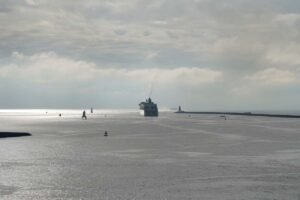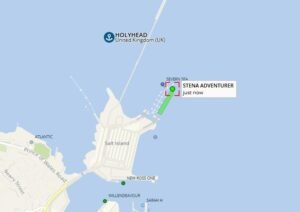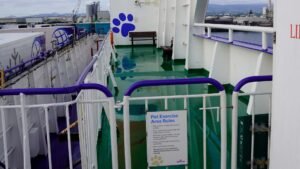Holyhead Dublin » Timetable » Sailing updates
Holyhead-Dublin Ferry Updates
Stay informed before you sail. Find early information about possible ferry cancellations
● The fast catamaran ferry of Irish Ferries, the Dublin Swift, is out of service on this route during the late season. It will resume operation as summer approaches.
Travelling across the Irish Sea is usually smooth and reliable, but weather and port conditions can sometimes affect the ferry schedules. On this page, you’ll find practical advice on how to stay informed.
Live updates from the ferry companies
Irish Ferries and Stena Line provide sailing updates on their websites, and booked passengers are usually notified in advance by email or phone. Both companies also post updates on their social media channels, which can sometimes be even faster during service disruptions. Cancellations or delays for today’s or tomorrow’s sailings are shown in the schedules online:
Weather conditions on the Irish Sea
The Irish Sea is known for its rough conditions, especially when storms sweep in from the southwest. Bad weather is the most common reason for delays or cancellations.
On our weather page, you can find detailed maps of the Irish Sea showing wave height, wind speed, and a forecast. This helps you estimate whether sailings are likely to run as planned.
Live
Real time ferry location
Sometimes you may find yourself waiting in line with no updates about delays, and yet no ferry seems to be arriving. Thanks to the onboard transponder, there are ways to track the ferry’s live position and see where it is.
Live
Ferry types and reliability
Not all ferries are affected in the same way by bad weather:
- Cruiseferries
Ulysses,
James Joyce,
Stena Adventurer,
Stena Estrid
These are large, robust vessels that can handle rough seas. They are only cancelled in the case of very severe storms. If reliability matters most, these ferries are your safest choice. - Fast Ferry
Dublin Swift
This smaller, high-speed catamaran is much more sensitive to strong winds and high waves. It is usually the first service to be suspended in bad weather.
If you are on a short trip to Dublin or have an important appointment, booking a ticket on one of the larger cruise ferries offers the greatest certainty of sailing.
What to do if your ferry is cancelled
Regardless of the reason, you will usually receive a message if you booked directly with the ferry company. This will include further instructions. Often, it means you can choose to cancel your trip or rebook it for another crossing. With some companies, you may also receive a small credit, for example in the form of a meal voucher or something similar.
Possible reasons for cancellations
We understand how inconvenient a cancelation may be, but there are good reasons for cancelations:
1) Bad weather conditions
Rough seas may lead to cancellations for safety reasons, and severe storms can even damage port infrastructure. This happened in December 2024 during Storm Darragh, when Holyhead–Dublin services were temporarily redirected via Liverpool and Fishguard.
2) Technical problems
Mechanical issues, such as engine or steering failures, may require urgent repairs before the ferry can operate again.
3) Operational reasons
Sometimes a crossing is cancelled due to staff shortages, strikes, or scheduling problems at the port. With some operators we suspect that rebookings occasionally take place simply to avoid sailing with empty ships, but so far we have not seen any signs of this on the Holyhead–Dublin services.
4) Medical emergencies
If a passenger or crew member requires urgent medical care, the ferry may need to return to port or delay its departure.
5) Unforeseen circumstances
Security concerns, blockages in the harbour, or government restrictions (for example during a pandemic) can also lead to cancellations.
Navigate to...
Planning ahead
Even though cancellations are relatively rare, it is always wise to build some margin into your travel plans:
- If possible, allow an extra day in your schedule in case of delays.
- Always check the latest updates before travelling to the port.
- Check the weather conditions up to 7 days ahead.
- For short stays or time-sensitive trips, choose the larger ferries for maximum reliability.



